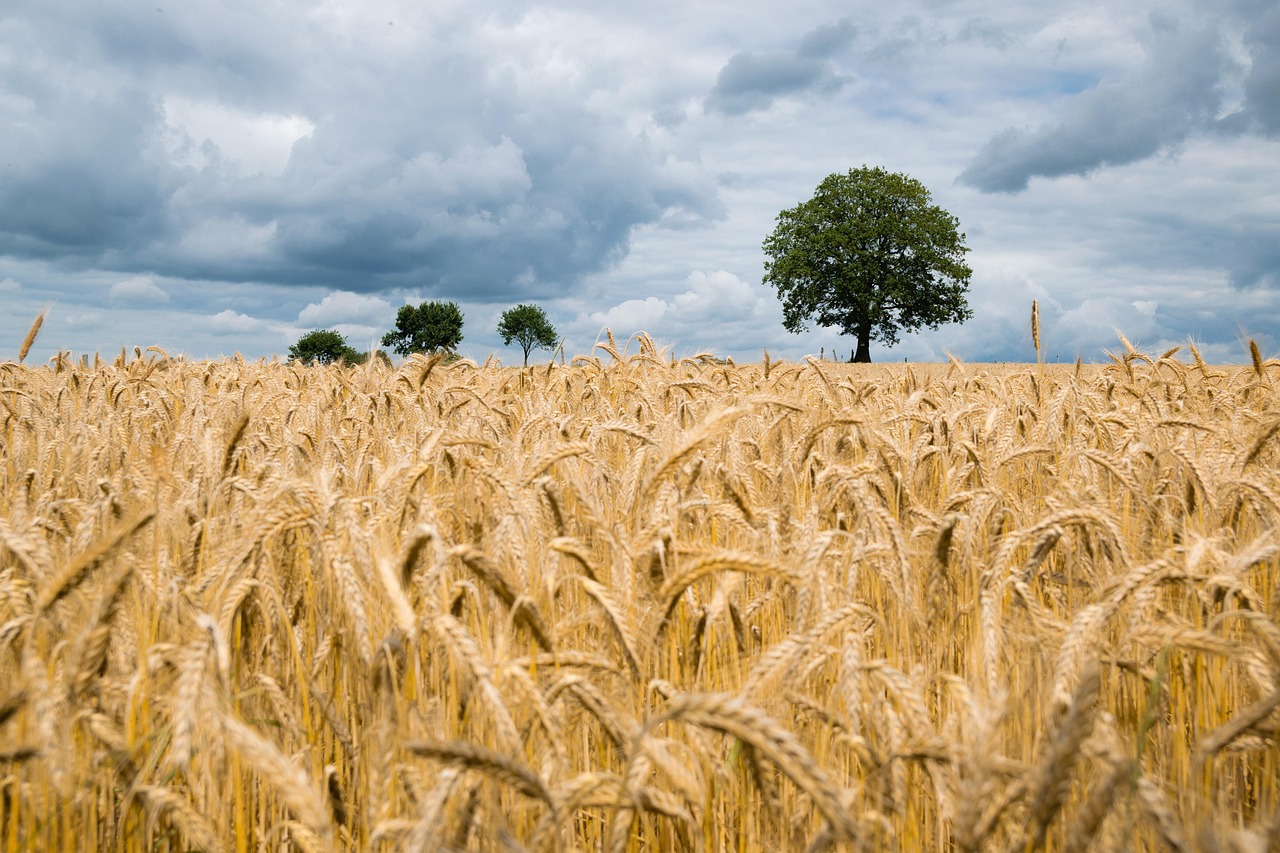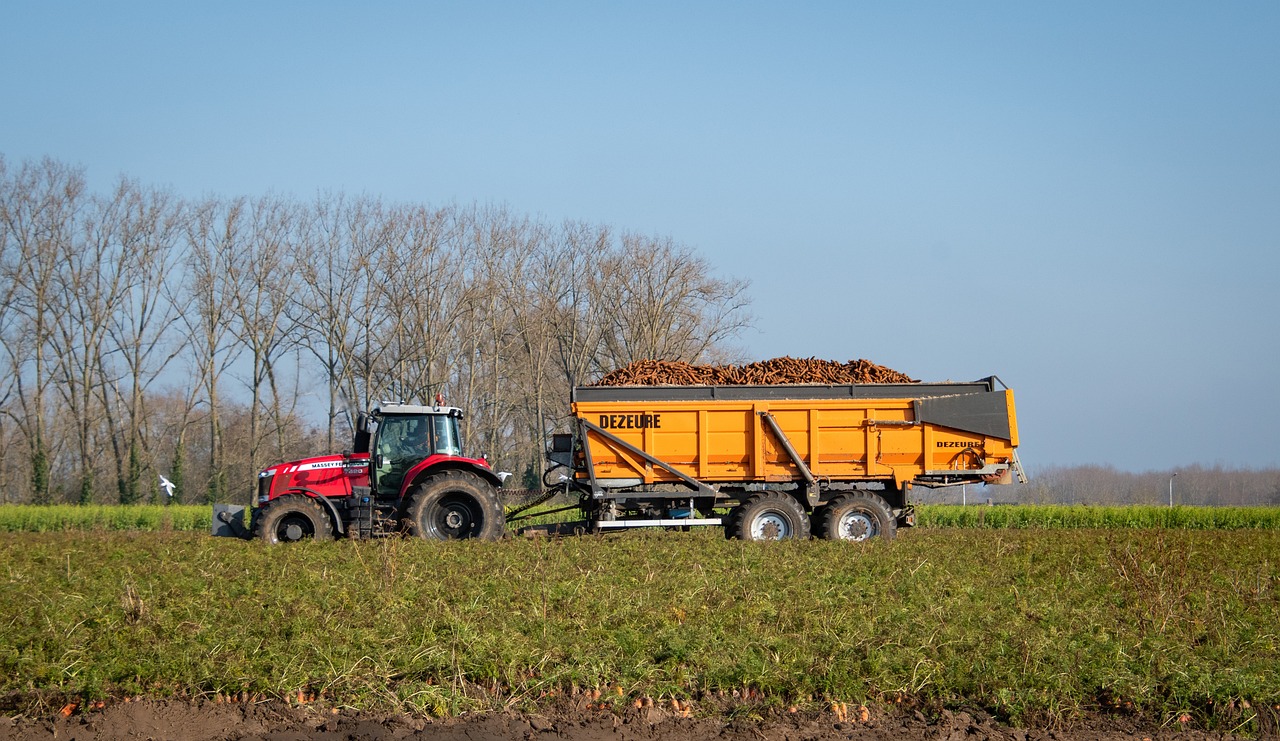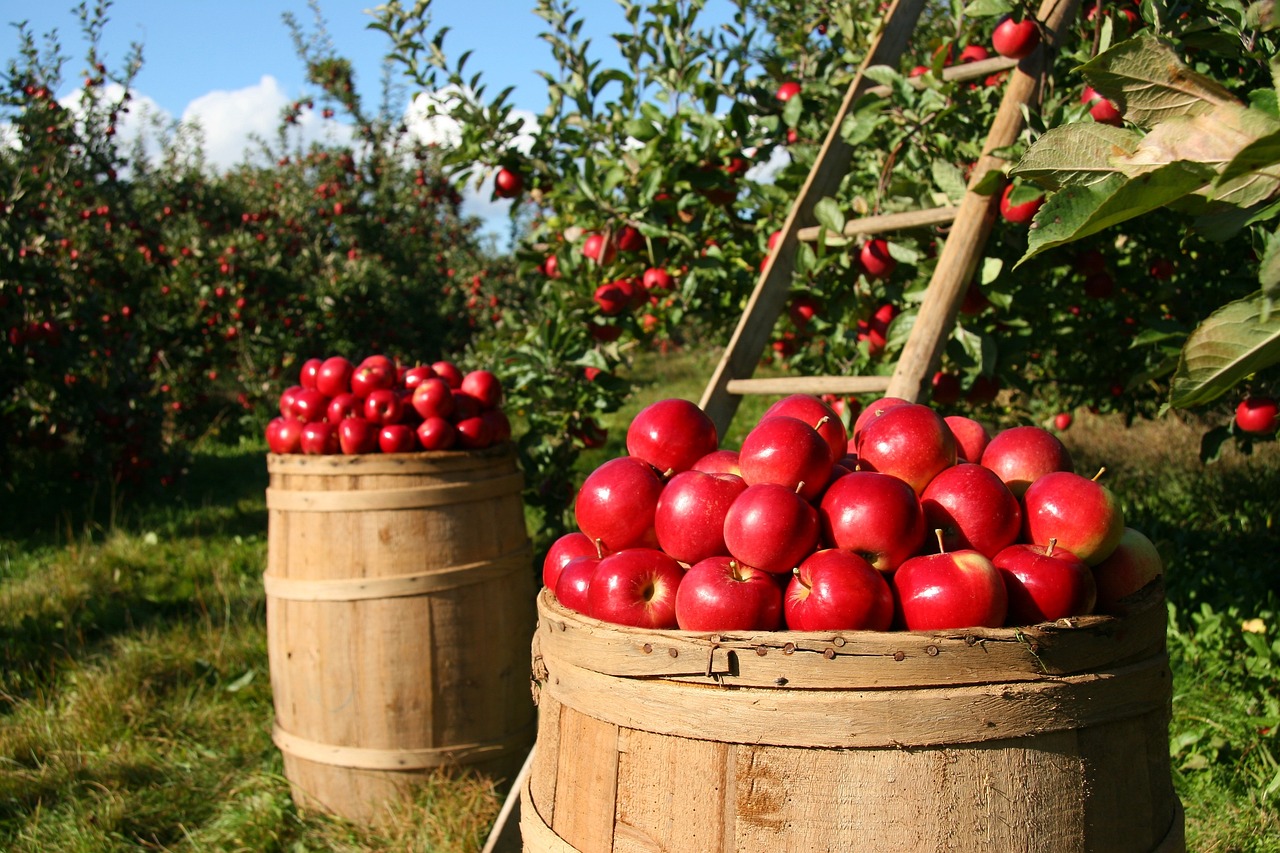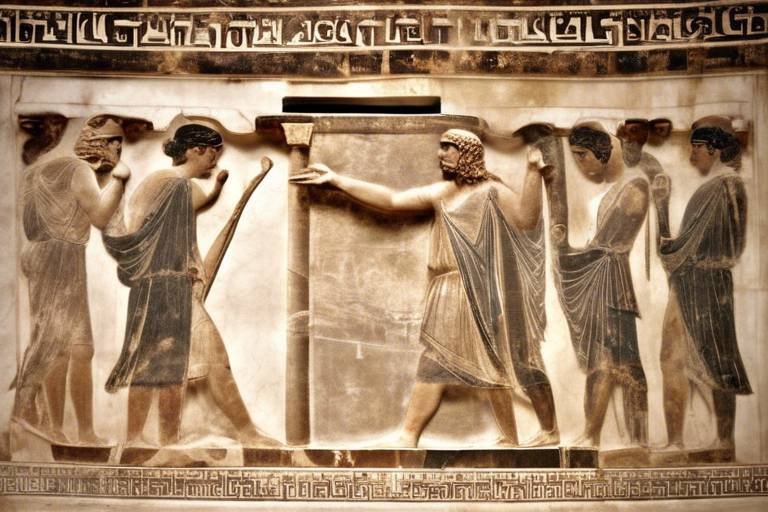The Enigma of the Ancient Mesopotamians' Farming Practices
The ancient Mesopotamians, with their enigmatic farming practices, have long captivated the interest of historians and archaeologists alike. Delving into the depths of history, we uncover a world where agriculture was not just a means of sustenance but a cornerstone of civilization itself. The mysteries surrounding how these ancient peoples cultivated the land, nurtured crops, and tamed nature continue to intrigue us to this day.
Imagine a time when the fertile lands of Mesopotamia were transformed into a patchwork of fields and orchards, teeming with life and abundance. The ingenuity of the Mesopotamian farmers knew no bounds as they devised innovative techniques to harness the power of the land and ensure bountiful harvests year after year.
One of the most remarkable aspects of ancient Mesopotamian farming was their advanced irrigation systems. Through a network of canals, levees, and reservoirs, they managed to control the flow of water, bringing life to arid landscapes and turning them into flourishing oases. The mastery of water resources was the key to their agricultural success, enabling them to grow a diverse range of crops and sustain a thriving society.
Furthermore, the Mesopotamians were pioneers in crop diversity and rotation, cultivating staples such as barley, wheat, and dates. By rotating crops and replenishing the soil's nutrients, they maintained the fertility of the land and ensured sustainable agriculture for generations to come.
Tools such as the ard plow, sickles, and threshing sledges were essential to their farming practices, increasing efficiency and productivity in the fields. The careful management of livestock, including cattle, sheep, and goats, also played a crucial role in agricultural activities, from plowing the land to providing food and transportation.
Religious beliefs and cultural practices intertwined with farming in Mesopotamia, with agricultural deities like Enlil and Ninurta revered for their influence over fertility, harvests, and the changing seasons. These spiritual connections underscored the importance of agriculture in Mesopotamian society, shaping not just their economy but their entire worldview.
As the surplus agricultural produce of the Mesopotamians fueled trade networks and economic growth, urban centers emerged, laying the foundation for complex societies to flourish. The legacy of their farming practices echoes through the ages, offering insights into environmental sustainability and the enduring impact of ancient wisdom on modern agriculture.

Ancient Irrigation Systems
Exploring the mysterious agricultural techniques of the ancient Mesopotamians and their impact on civilization. Unraveling the secrets behind their innovative farming methods and the significance of agriculture in shaping the Mesopotamian society.
Ancient Mesopotamia, known as the cradle of civilization, was home to remarkable advancements in agriculture, particularly in the realm of irrigation systems. The Mesopotamians ingeniously devised sophisticated methods to overcome the challenges posed by the arid climate and limited rainfall of the region. One of their most notable achievements was the development of intricate irrigation systems, including canals and levees, which played a pivotal role in enabling successful crop cultivation.
By strategically diverting water from rivers such as the Tigris and Euphrates, the Mesopotamians were able to transform vast tracts of land into fertile agricultural fields. These meticulously planned irrigation networks not only provided essential moisture for crops but also facilitated efficient water distribution, ensuring the sustenance of their agricultural endeavors.
The construction of canals allowed the Mesopotamians to control the flow of water and irrigate fields at different stages of the growing season, contributing to higher crop yields and agricultural productivity. Moreover, the implementation of levees helped prevent flooding and soil erosion, safeguarding the viability of farmland and ensuring long-term sustainability.
Through their mastery of ancient irrigation systems, the Mesopotamians demonstrated a profound understanding of the land and its resources, showcasing their ingenuity and resourcefulness in harnessing nature to support their agricultural practices.

Crop Diversity and Rotation
The agricultural practices of the ancient Mesopotamians were characterized by a remarkable diversity of crops and a sophisticated system of crop rotation. The Mesopotamians cultivated a wide range of crops, including barley, wheat, dates, lentils, and vegetables. This diverse selection of crops not only provided nutritional variety but also served as a strategic approach to ensure food security. By rotating crops seasonally, they could maintain soil fertility and prevent depletion of nutrients, ultimately leading to sustainable agricultural practices.
Furthermore, the practice of crop rotation allowed the Mesopotamians to maximize their yields and minimize the risk of crop failure. By alternating the types of crops planted in specific fields, they could effectively manage pests and diseases that target specific plant species. This method of crop rotation was a testament to their advanced understanding of agricultural principles and their ability to adapt to environmental challenges.
In addition to crop diversity and rotation, the Mesopotamians also implemented innovative irrigation techniques to ensure the success of their agricultural endeavors. The combination of diverse crops, strategic rotation, and efficient irrigation systems contributed to the prosperity of Mesopotamian agriculture and played a crucial role in sustaining their civilization.

Use of Plows and Tools
The ancient Mesopotamians were pioneers in the development and utilization of various tools and implements for their farming practices. One of the most crucial innovations was the ard plow, a simple yet effective tool used for tilling the soil and preparing it for planting. This wooden plow, pulled by oxen, allowed farmers to break up the hard ground and create furrows for sowing seeds, significantly improving agricultural efficiency.
In addition to the ard plow, Mesopotamian farmers also employed sickles for harvesting crops such as barley and wheat. These curved, sharp-edged tools were essential for cutting the mature grain stalks during the harvest season. The use of sickles enabled farmers to efficiently collect and process their crops, ensuring a successful harvest and food security for their communities.
Furthermore, the ancient Mesopotamians utilized threshing sledges to separate the grain from the chaff after harvesting. These wooden sledges, equipped with sharp stones or metal pieces on the underside, were dragged over the harvested grain to crush the stalks and separate the edible kernels. This process of threshing and winnowing was crucial for grain preservation and storage, allowing farmers to store surplus produce for future consumption or trade.
The combination of these tools, including the ard plow, sickles, and threshing sledges, revolutionized agricultural practices in ancient Mesopotamia. By harnessing the power of these implements, Mesopotamian farmers were able to cultivate the land more efficiently, increase crop yields, and sustain their growing population. The legacy of their innovative tools continues to influence modern farming techniques and equipment, highlighting the enduring impact of ancient Mesopotamian agriculture on global food production.

Management of Water Resources
The management of water resources was a critical aspect of ancient Mesopotamian farming practices, essential for sustaining agricultural productivity in a region largely dependent on irrigation. The Mesopotamians ingeniously engineered various water management systems to harness the limited water supply efficiently. Canals, one of their most remarkable innovations, served as vital conduits for diverting water from rivers like the Tigris and Euphrates to irrigate fields across the landscape. These canals, meticulously designed and maintained, played a pivotal role in ensuring a consistent water supply for crops, especially during dry periods.
In addition to canals, the Mesopotamians constructed levees to control the flow of water and prevent flooding, a constant threat in the flat plains of the region. By strategically building embankments along riverbanks, they could regulate water levels and protect their fields from inundation, showcasing their advanced understanding of hydraulic engineering. Moreover, reservoirs and dams were built to store excess water during periods of abundance, providing a reserve for times of drought and serving as a buffer against unpredictable fluctuations in water availability.
The intricate network of aqueducts further exemplified the Mesopotamians' mastery in water management, facilitating the distribution of water to distant fields and ensuring efficient utilization of resources. These aqueducts, constructed with precision and skill, enabled the transportation of water over long distances, enhancing the agricultural potential of the region beyond the immediate vicinity of rivers. By harnessing the power of water through innovative infrastructure, the Mesopotamians transformed arid landscapes into fertile grounds capable of sustaining thriving agricultural communities.

Domestication of Livestock
The domestication of livestock by the ancient Mesopotamians marked a pivotal moment in the development of their agricultural practices. Livestock, including cattle, sheep, and goats, played a crucial role in various aspects of Mesopotamian society, serving not only as a source of food but also as essential partners in agricultural activities. Cattle were used for plowing fields, sheep provided wool for textiles, and goats supplied milk and meat. The domestication of these animals revolutionized farming methods, enabling greater efficiency and productivity in food production.
Moreover, the Mesopotamians recognized the multifaceted benefits of livestock beyond agriculture. These animals were utilized for transportation, carrying goods across vast distances and facilitating trade networks. The presence of livestock also held cultural significance, with certain animals being associated with deities and rituals in Mesopotamian religious practices. The close connection between humans and livestock underscored the interdependence of agricultural activities and societal beliefs in ancient Mesopotamia.

Religious and Cultural Influences
Religious and cultural influences played a pivotal role in shaping the agricultural practices of the ancient Mesopotamians. The Mesopotamians attributed profound religious significance to farming activities, viewing them as essential for ensuring the fertility of the land and a bountiful harvest. Deities such as Enlil, the god of wind and storms, and Ninurta, the god of agriculture and irrigation, were revered for their association with agricultural fertility and the changing seasons.
Moreover, cultural beliefs surrounding the cyclical nature of life and death were intertwined with agricultural rituals and practices. The Mesopotamians conducted elaborate ceremonies and offerings to appease the agricultural deities and ensure the success of their crops. These rituals were not merely superstitious beliefs but integral components of a complex agricultural system that sustained their society.
Furthermore, the Mesopotamians' cultural practices influenced their approach to land ownership and distribution. Land was considered a sacred resource entrusted to humanity by the gods, and equitable distribution among the population was a reflection of divine order. This cultural ethos of communal responsibility for agricultural land fostered cooperation and collective efforts in farming activities.
The religious and cultural influences on Mesopotamian farming extended beyond mere superstition, shaping the very fabric of their society and governance. The agricultural calendar, based on lunar cycles and celestial observations, governed not only planting and harvesting seasons but also religious festivals and social gatherings. The synchronization of agricultural and cultural events underscored the interconnectedness of farming, spirituality, and community life.

Trade and Agricultural Surplus
Trade and Agricultural Surplus played a pivotal role in the prosperity and development of ancient Mesopotamian civilization. The surplus agricultural produce generated by the innovative farming practices of the Mesopotamians not only sustained their own communities but also enabled extensive trade networks to flourish across the region. Through the exchange of goods and commodities, Mesopotamian farmers were able to acquire resources that were not locally available, fostering economic growth and cultural exchange.
The surplus of crops such as barley, wheat, and dates allowed the Mesopotamians to engage in trade with neighboring societies, establishing a system of barter and commerce that facilitated the exchange of goods ranging from food staples to luxury items. This trade network not only enriched the Mesopotamian economy but also contributed to the development of urban centers and the emergence of specialized craft industries.
Moreover, the agricultural surplus played a crucial role in supporting the growing population of Mesopotamia, enabling the establishment of social hierarchies and centralized governance structures. The surplus production of food allowed for the specialization of labor, with some individuals focusing on non-agricultural activities such as administration, trade, and craftsmanship.
As a result, the agricultural surplus of the Mesopotamians was not only a means of sustenance but also a catalyst for societal complexity and cultural advancement. The surplus agricultural output fueled the growth of cities such as Uruk and Ur, which became centers of political power, religious worship, and artistic innovation.
Furthermore, the surplus agricultural produce of the Mesopotamians had far-reaching implications beyond their immediate society. The trade networks established by Mesopotamian merchants extended to distant lands, facilitating the exchange of goods with regions as far as the Indus Valley and Egypt.
In conclusion, the trade and agricultural surplus of the ancient Mesopotamians were integral to the flourishing of their civilization and the interconnectedness of the ancient world. By harnessing the bounty of their fertile lands and engaging in trade with neighboring cultures, the Mesopotamians laid the foundation for the development of complex societies and the exchange of ideas that shaped the course of human history.

Legacy and Modern Implications
As we delve into the legacy of the ancient Mesopotamians' farming practices, we uncover a rich tapestry of innovation and foresight that continues to influence modern agriculture. The agricultural techniques pioneered by the Mesopotamians have left an indelible mark on the development of farming methods and environmental sustainability.
One of the most significant implications of Mesopotamian farming practices is their emphasis on irrigation systems and water management. The sophisticated irrigation networks built by the Mesopotamians set a precedent for efficient water utilization in agriculture, a lesson that resonates strongly in today's world facing water scarcity challenges.
Furthermore, the Mesopotamians' cultivation of a diverse range of crops and their implementation of crop rotation techniques highlight the importance of soil fertility preservation and sustainable farming practices. These principles are echoed in modern agricultural approaches that aim to maintain soil health and maximize crop yields.
The domestication of livestock by the Mesopotamians not only revolutionized agricultural activities but also laid the foundation for animal husbandry practices that are integral to contemporary farming systems. The symbiotic relationship between livestock and agriculture established by the Mesopotamians continues to shape livestock management practices today.
Moreover, the surplus agricultural produce generated by the Mesopotamians fueled trade networks and economic growth, leading to the development of urban centers and complex societies. This legacy of agricultural surplus as a catalyst for societal advancement underscores the importance of agricultural productivity in fostering economic development.
Reflecting on the enduring legacy of Mesopotamian farming practices, we are reminded of the timeless wisdom embedded in their agricultural innovations. The lessons learned from the ancient Mesopotamians transcend time and offer valuable insights into sustainable agriculture, resource management, and the interconnectedness of farming with societal progress.
Frequently Asked Questions
- What were the key agricultural practices of the ancient Mesopotamians?
The ancient Mesopotamians employed innovative farming techniques such as sophisticated irrigation systems, crop diversity and rotation, use of plows and tools, management of water resources, and domestication of livestock.
- How did irrigation systems contribute to the success of Mesopotamian agriculture?
The irrigation systems, including canals and levees, played a crucial role in enabling successful crop cultivation in a region with limited rainfall, ensuring consistent water supply for crops.
- What crops were commonly grown by the Mesopotamians?
The Mesopotamians cultivated a variety of crops such as barley, wheat, and dates, and practiced crop rotation to maintain soil fertility and optimize yields.
- What tools and implements did ancient Mesopotamian farmers use?
Ancient Mesopotamian farmers utilized tools like the ard plow, sickles, and threshing sledges, which significantly enhanced agricultural efficiency and productivity.
- How did the management of water resources impact Mesopotamian agriculture?
The Mesopotamians constructed reservoirs, dams, and aqueducts to manage water resources effectively, highlighting the importance of water conservation in sustaining their farming practices.
- What role did livestock play in Mesopotamian agriculture?
Livestock, including cattle, sheep, and goats, were integral to Mesopotamian agricultural activities such as plowing, transportation, and food production, contributing significantly to their farming practices.
- How did religious and cultural beliefs influence Mesopotamian farming?
Religious beliefs and cultural practices, including the worship of agricultural deities like Enlil and Ninurta, shaped Mesopotamian farming by associating fertility, harvests, and seasonal changes with divine forces.
- What was the impact of trade on Mesopotamian agricultural surplus?
The surplus agricultural produce of the Mesopotamians fueled trade networks, economic growth, and urban development, leading to the emergence of complex societies in the region.
- What is the modern relevance of Mesopotamian farming practices?
The enduring legacy of Mesopotamian farming practices continues to influence modern agriculture, emphasizing environmental sustainability and offering valuable lessons for contemporary food production methods.



















